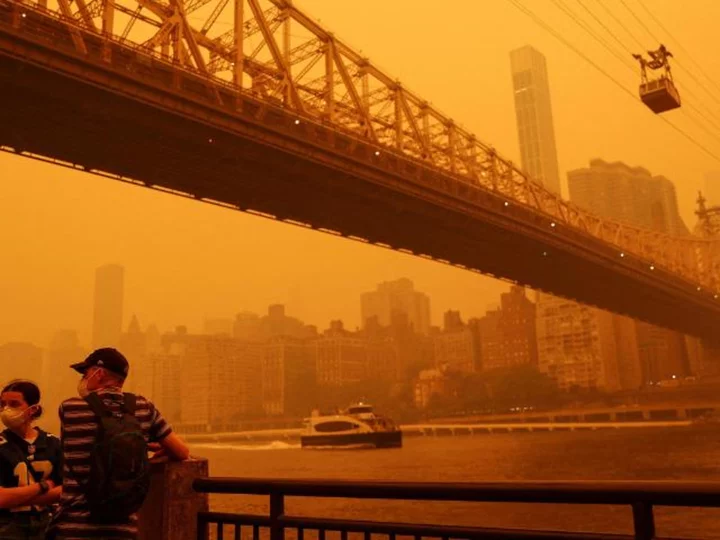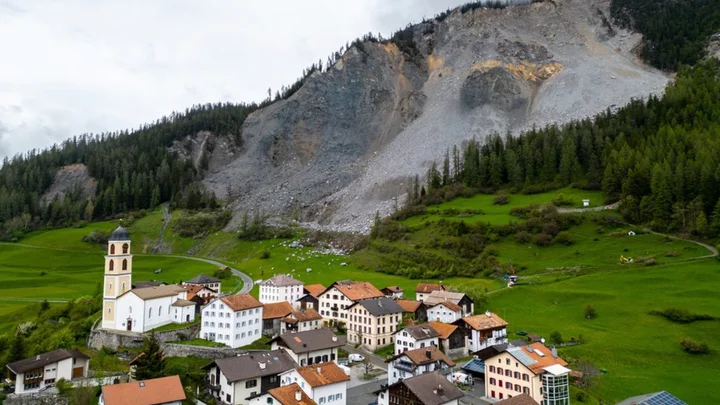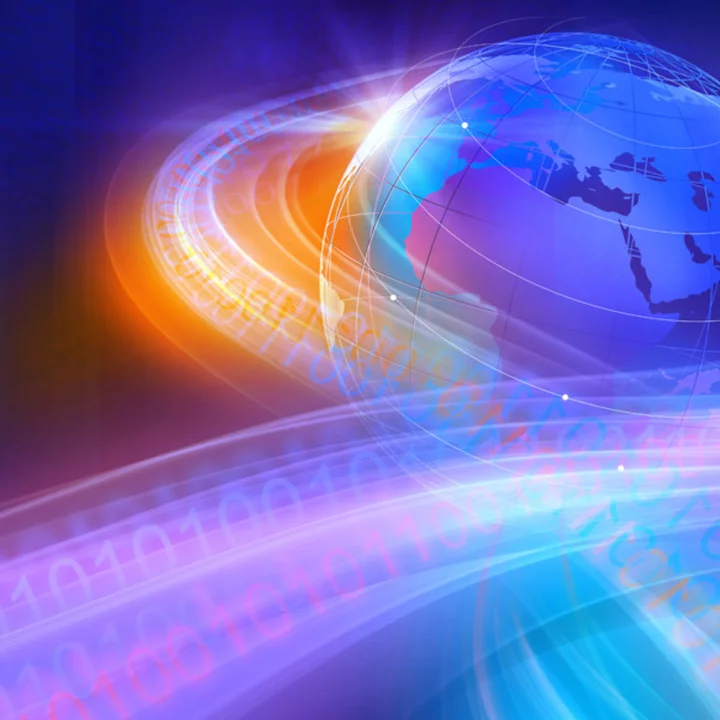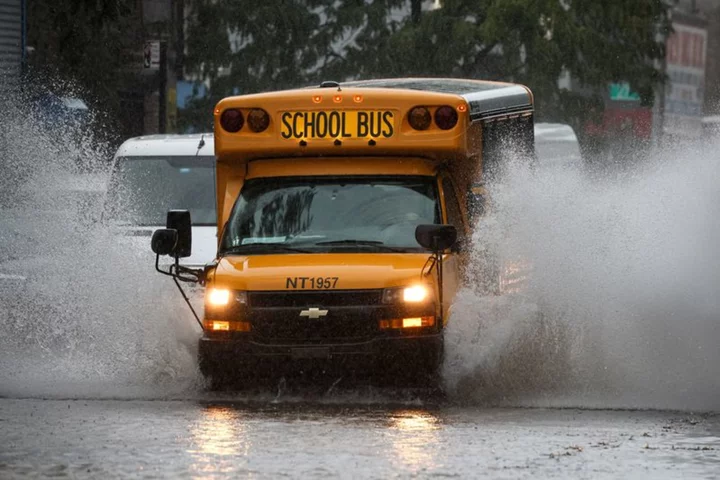A whopping 75 million people from the Midwest to the Northeast and down to the mid-Atlantic are looking at an unhealthy smoky haze slowly drifting down from Canada.
New York, Philadelphia and other cities issued "code red" air quality alerts, urging everyone, but especially those at risk for respiratory issues, to stay inside and avoid the potentially noxious air.
New Yorkers unused to such pollution are living in the city with the worst air quality in the world as of Wednesday afternoon, although the rankings on air quality tracker IQair.com fluctuate.
On Wednesday, you could barely make out the New York City skyline, and the air quality hasn't been this bad since the 1960s.
The Federal Aviation Administration put a ground stop for flights bound for LaGuardia Airport in New York for part of Wednesday, delayed flights to Newark Liberty International Airport in New Jersey and warned of the potential flight delays throughout the Northeast corridor.
Schools and activities are being canceled in an effort to protect those most at risk.
And there's not much anyone can do about it.
Smoke creeping down from the Quebec wildfires is going to continue, turning the sky an eerie orange along with it.
Check out these related interactives:
Tracking wildfires in the US.Track the air quality across the US.
How long will this last?
"This could be something we deal with off and on throughout the remainder of the summer," CNN meteorologist Jennifer Gray said on "CNN News Central" Wednesday. "Canada is still early in their fire season, and it has just exploded; while some days might be better than others, this could be a problem we're talking about long term."
New York City's Emergency Management Commissioner Zachary Iscol warned the city's health advisory is expected to be a "multiple-day event."
Why is it happening?
We are essentially stuck in a weather pattern, said Gray, pointing to an area of high pressure to the northwest of the Great Lakes.
"It's channeling these winds out of the north and bringing the smoke in day after day," she said. "Until this big weather pattern decides to shift and we get a change in wind direction, the smoke is going to stick around."
The smoke could also move more toward the Midwest and the Ohio Valley before swinging back toward the Northeast and mid-Atlantic.
Why is this happening in the East this year?
The North American West has become much more accustomed to wildfire smoke in recent years. Last year, it was Europe suffering. This year, smoke is hurting the East Coast.
While this year could be relatively quiet for the Southwest, the National Interagency Fire Center predicts above normal fire activity in the Pacific Northwest through September and in the Northeast through August.
Of course, there's a climate change tie-in. Here's a key line from CNN's report on the smoke:
Human-induced climate change has exacerbated the hot and dry conditions that fuel wildfires.
Scientists recently reported that millions of acres scorched by wildfires in the Western US and Canada -- an area roughly the size of South Carolina -- could be traced back to carbon pollution from the world's largest fossil fuel and cement companies.
Learn to live with it
The United Nations warned last year that the number of extreme wildfires will jump 14% by 2030 and 30% by 2050.
The world must "learn to live with fire," according to that report from the UN Environment Programme.
While the Northeast is currently dealing with smoke from wildfires, it is the portion of the country in least danger from wildfires themselves. In coming decades, more and more of the country, particularly in the Southwest, will become susceptible to wildfires, according to data from the nonprofit First Street Foundation analyzed by The Washington Post last year.
Air quality is actually much better than it used to be
The smoke is a disruption, dangerous for some people and likely to be a periodic part of life during this era of climate change. But it's also important to remember that air quality in industrialized countries like the US is actually much better than it was in previous eras.
Air quality has improved drastically in the US since 1980, according to the Environmental Protection Agency, and that's in part because of what the government has done under public safety laws passed in previous generations.
It hasn't been enough
Reduced emissions, better fuel economy and energy efficiency have all helped make American air quality much better than it used to be. But those improvements have not been steep or fast enough to stop climate change, which is now driving the threat to air quality posed by wildfires.
New climate action from Congress is unlikely in the current political environment. But the EPA and the Biden administration are still using administrative authority.
Last month, the Biden administration proposed rules to force most US power plants to either slash or capture fossil fuel emissions. In April, it proposed new tailpipe rules to supercharge the number of electric vehicles on the road. This month, it announced a goal to produce more clean hydrogen fuel.
It's also worth noting that the Supreme Court last year severely limited the EPA's power to curb emissions, so all of those Biden administration efforts could ultimately be stopped in court.
Chief Justice John Roberts wrote in his opinion that capping carbon emissions and transitioning the country away from the use of coal may very well be a good and "sensible" idea, but he and conservatives on the court said Congress, not the EPA, should actively create the regulatory scheme to make it happen.
That means the political reality in the US makes addressing climate change a tricky proposition, particularly as distrust in the government has grown after the Covid-19 pandemic.
Which also means that regardless of how you feel about climate change, or the overwhelming evidence that humans have driven it, it's time to get used to more smoke and wildfires.









